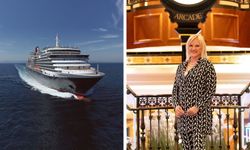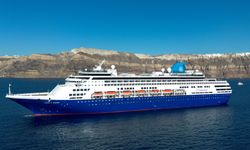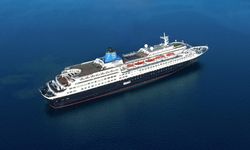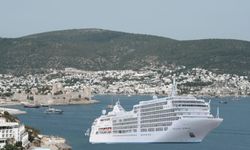Built by the Finnish shipbuilding company Turku for Royal Caribbean, one of the world's largest cruise companies, the Icon of the Seas, costing 2 billion dollars, embarked on its first voyage from the Port of Miami in the USA. The ship's route is through the Caribbean.
With a total capacity of 10,000 people
At five times the size of the legendary Titanic, the Icon of the Seas measures 350 meters in length and can accommodate approximately 10,000 people, with 7,500 passengers and 2,300 crew members.
The floating city features 20 different main decks, 40 restaurants, bars, lounges, 7 swimming pools, and a 55-meter-high waterfall.
Passenger carbon footprint doubles
On the other hand, there are environmental warnings related to the giant ship. Studies suggest that the massive ship's greenhouse gas emissions could double.
Comparing an airplane + hotel vacation to an airplane + cruise vacation, Bryan Comer, Director of the International Clean Transportation Council's Maritime Program, calculated that a person embarking on a 2,000-kilometer cruise from the USA produces 500 kilograms of CO2, while a person on an airplane + hotel vacation produces 235 kilograms of CO2. In other words, cruise travel nearly doubles the carbon footprint of passengers.
About Royal Caribbean International
Royal Caribbean International is a prominent cruise line known for revolutionizing the industry with its innovative and large-scale ships. Founded in 1968 in Norway, the company is now based in Miami, Florida. It's one of the largest cruise lines in the world, both in terms of fleet size and passenger capacity.
Key aspects of Royal Caribbean include:
Innovative Ships: Royal Caribbean is renowned for having some of the largest and most innovative cruise ships in the world. Their ships often feature groundbreaking amenities like rock climbing walls, ice-skating rinks, robotic bartenders, and virtual balconies.
Oasis and Quantum Classes: The company's Oasis-class ships are among the largest cruise ships in the world. The Quantum class is also notable for its technological advancements, including the North Star observation pod and the Bionic Bar.
Destinations: Royal Caribbean cruises to numerous destinations including the Caribbean, Alaska, Europe, South America, Asia, and Australia. They offer a range of itineraries from short trips to extensive voyages.
Family-Friendly and Entertainment: The cruise line is known for being family-friendly, with a plethora of activities suitable for children and teens. Entertainment options are vast, from Broadway shows to live music and high-tech productions.
Innovations in Sustainability: While the cruise industry has been criticized for environmental impacts, Royal Caribbean has made efforts to improve sustainability through waste management, energy efficiency, and emission reduction technologies.
Private Islands: Royal Caribbean owns several private islands, like Perfect Day at CocoCay in the Bahamas, offering exclusive experiences for its passengers.
Royal Promenade: Many of their ships feature a Royal Promenade, a central boulevard lined with shops, restaurants, and bars, enhancing the urban, lively feel on board.
COVID-19 Response: Like the rest of the cruise industry, Royal Caribbean was significantly affected by the COVID-19 pandemic. They implemented comprehensive health and safety protocols to address the challenges posed by the pandemic.
Loyalty Program: They have a loyalty program called Crown & Anchor Society, which rewards frequent cruisers with various benefits.
Market Presence: As a major player in the industry, Royal Caribbean continues to be influential in shaping cruise travel's future, always pushing the envelope in terms of ship design and guest experiences.
Royal Caribbean's approach to cruising is characterized by a blend of luxury, adventure, and family-friendly experiences, making it a popular choice for a wide range of travelers.



